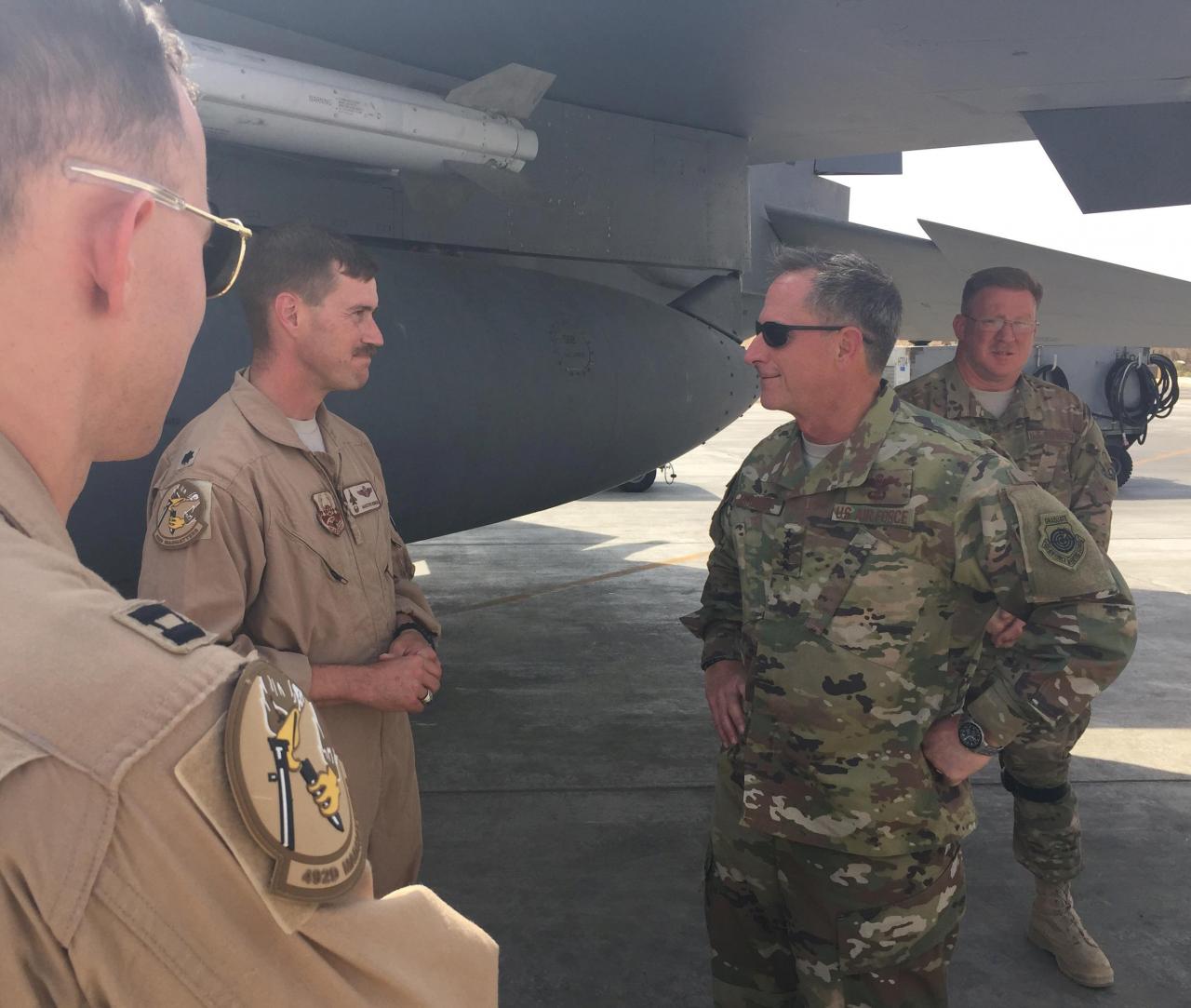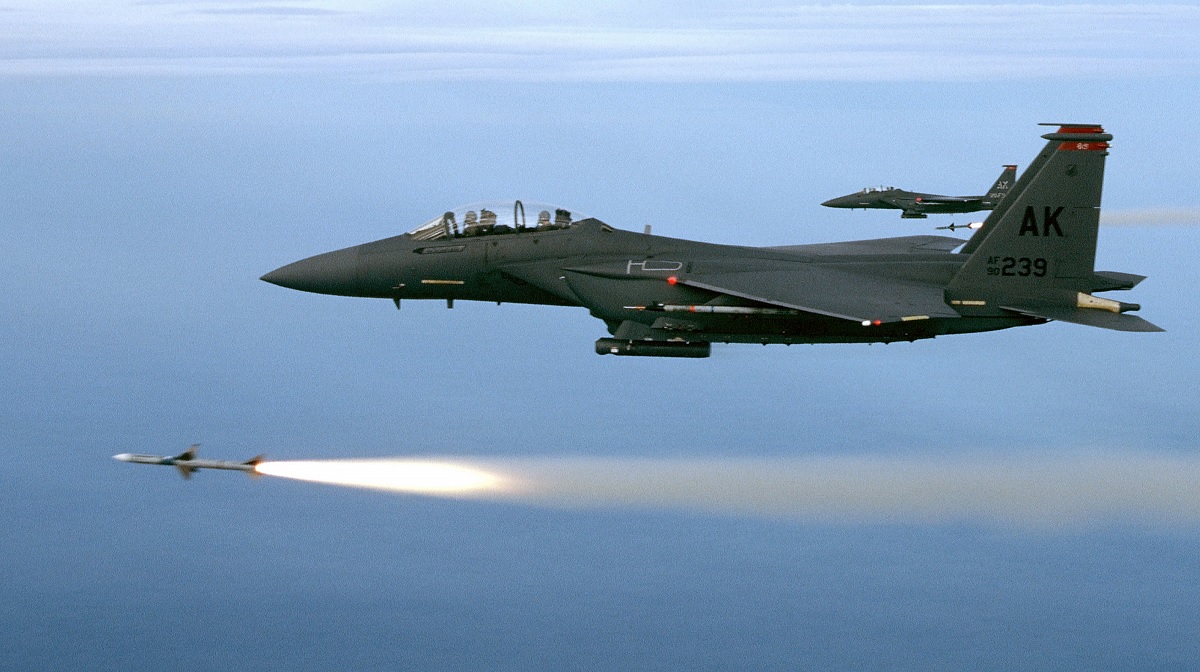The drone was small enough that the missile Lieutenant Colonel Jeremy Renken would fire from his F-15E could potentially go long and inadvertently head toward two nearby Russian Flanker fighter jets
As we have previously reported, on Jun.8, 2017, a U.S. Air Force (USAF) F-15E Strike Eagle fighter bomber shot down a “pro-Syria regime” drone after the unmanned aerial vehicle (UAV) attacked U.S.-backed fighters in southern Syria.
Now, Lieutenant Colonel Jeremy Renken, the F-15E driver who scored the kill, revealed to Reuters some interesting details about the air engagement.
So, on Jun. 8 Renken was flying his Strike Eagle in “a race track” pattern around the Iranian-made drone, which had just tried to kill U.S.-backed forces and their advisers on the ground.
After the drone’s first shot failed to detonate on impact, it was positioning to strike again.
“When we saw the drone turn back towards friendly forces, we weren’t waiting around for anybody’s permission. We destroyed it,” he said.

Noteworthy Renken’s downing of the Iranian drone, a Shahid 129, was the first in a series of several defensive U.S. air-to-air shootdowns over several weeks in June that at first appeared to signal a tipping point to a far more dangerous air war in Syria.
But since the decisions by Renken and other U.S. pilots to fire at two drones and a manned Syrian fighter jet in June, there haven’t been similarly provocative actions by pro-Syrian forces. U.S. officials say they seem to have delivered the message.
However, since two Russian fighter jets watched the engagement from a distance, Renken knew that whatever happened next could escalate the war in Syria.
The Syrian air war is in fact unique: armed aircraft from Syria, Russia, the U.S., and its coalition allies are all flying within a “no escape” range of each other’s weapons.
“We can all engage each other. So it takes a lot of discipline and studying the nuance of a circumstance to (determine): ’Was that an escalation?’,” Renken said.
The U.S. military initially said the drone dropped a bomb that missed the convoy, which included U.S.-backed fighters and their advisors.
Instead according to Reuters, Renken offered a slightly different account.
He said the drone was actually carrying missiles. When the UAV fired, it hit the door of one of the vehicles with a munition that failed to detonate, he said.
“It was a dud round. So, very lucky,” Renken pointed out. “It was definitely intended to be a lethal shot.” The criteria needed to fire the drone had been clearly met, he said.
Nevertheless, there was still one factor complicating his decision to return fire: the presence of the Russian “Flanker” fighter jets, who might think that Renken was shooting at them.
“Is (the Russian pilot) going to see a missile come off of my aircraft and consider that a potential aggression against him?” he explained.
Furthermore, the drone was small enough that the missile Renken would fire could potentially go long and inadvertently head toward the Russian jets.
“(There) was a lot of potential for escalation,” he said.
For Renken, the war in Syria has evolved far beyond simply striking Islamic State targets on the ground.
“What this recent event has proven is that you can’t take for granted that you know what the fight is going to look like,” Renken said.

“You need to walk in ready for it to metastasize into any hybrid variation.”
Photo by Teddy Techer, U.S. Air Force/Handout via REUTERS, screenshot from YouTube and U.S. Air Force


